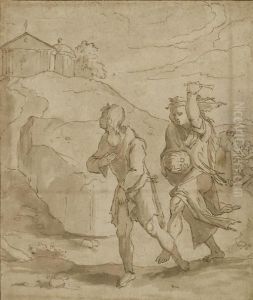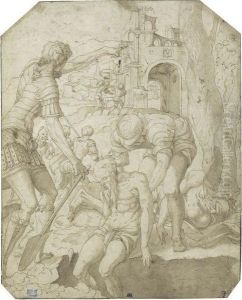Geoffroy Dumonstier Paintings
Geoffroy Dumonstier, also known as Geoffroy Dumoustier, was a French artist born in the year 1500 into the Dumonstier family, a lineage rich in painters and draughtsmen who were active throughout the 16th and early 17th centuries. This family played a significant role in the development of portrait drawing and miniature painting in France during the Renaissance period. Geoffroy, like many members of his family, specialized in portraiture, contributing to the era's cultural milieu with his meticulous and sensitive portrayals.
Dumonstier's work is characterized by its detailed execution and the intimate portrayal of his subjects. He often worked in watercolors and inks, demonstrating a masterful control over these mediums. His portraits are notable for their detailed attention to the textures of fabrics and the subtleties of facial expressions, capturing the personality and essence of his sitters. Geoffroy's contributions to French art were part of a broader movement that saw a growing interest in individual personality and the complexities of human expression during the Renaissance.
Throughout his career, Dumonstier enjoyed the patronage of the French court, producing works for a distinguished clientele that included members of the aristocracy and possibly the royal family. His ability to depict his subjects with both accuracy and empathy made him a sought-after portraitist during his lifetime. Despite the high regard in which he was held, many details of Dumonstier's life and career remain obscure, and only a limited number of his works have been definitively attributed to him.
After his death in 1573, Geoffroy Dumonstier's legacy continued through the works of his family members, who maintained the Dumonstier reputation in the arts for generations. His contributions to French portraiture and his influence on the development of the genre in the Renaissance period remain recognized by art historians today. Dumonstier's work not only reflects the artistic trends and cultural values of his time but also offers a window into the personal lives and fashions of the French elite during a pivotal era in European history.

